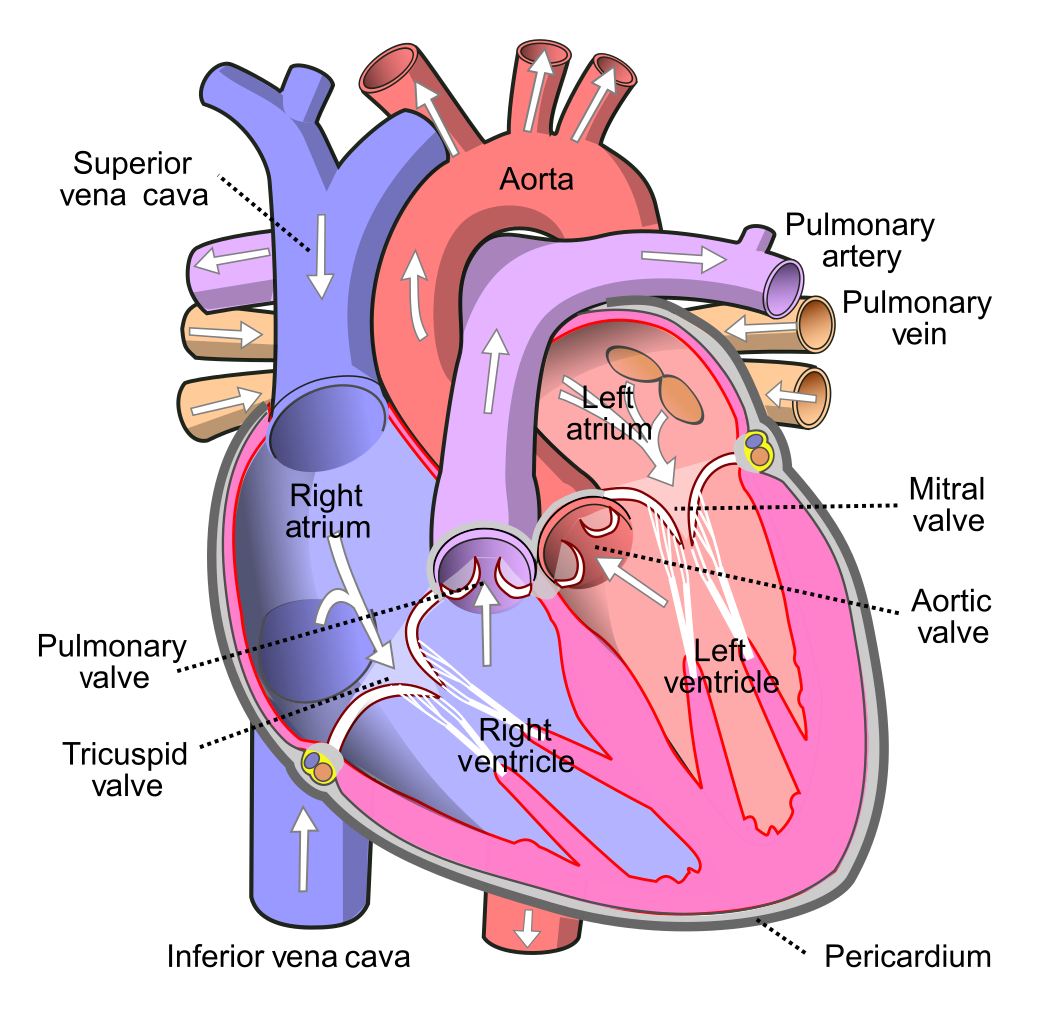Do you know what the heart does?
The Heart Quiz
The Heart GCSE Biology
At GCSE you are expected to have an understanding of the basic anatomy and function of the heart and circulatory system. The Heart Quiz will help you to remember the most important parts of the heart.
The heart is a complex organ that is beautifully crafted to do a particular job, keep you alive and well.
The heart is the main driver of the oxygen and nutrient transport system which uses blood as a medium.
The lungs are connected to the heart by a system of blood vessels that deliver deoxygenated blood to the lungs and then oxygenated blood returns to the heart.
Diagram of the Heart

Parts of the Heart
The above image shows a diagram of the heart. The different colours are used to separate and clearly show the path of blood in different chambers of the heart. The heart has 4 chambers, the upper chambers are known as atria (atrium singular). The lower chambers are called ventricles and the chambers are labelled in a mirrored fashion, with the ones on the left being called the right atrium and right ventricle. The whole system is linked via blood vessels called arteries, veins and capillaries.
Function of the Pulmonary Veins and Arteries
Deoxygenated blood from the right ventricle is pumped, through the right atrium and through the pulmonary arteries to the lungs. Oxygen from the lungs diffuses into the blood and binds to haemoglobin whilst carbon dioxide is removed via diffusion from the blood plasma into the air. The oxygenated blood then goes back to the heart, exiting the lungs via the pulmonary veins.

Once the oxygenated blood reaches the left ventricle, it is pumped through the left atrium and then through the aorta before going around the body. The blood later returns from the lower half of the body through the inferior vena cava and from the upper body through the superior vena cava.
Once the blood reaches the right ventricle, the process starts all over again. Valves between the atria and ventricles keep the blood from flowing in the opposite direction.
We hope the Heart Quiz has been useful and entertaining. If you want to test your knowledge of the heart why not try a GCSE Science Mock Exam?
Heart Rate, Cardiac Output and Stroke Volume
Heart rate, stroke volume and cardiac output are all closely related terms that describe the functioning of the heart.
Heart rate refers to the number of times the heart beats per minute, stroke volume refers to the amount of blood that is pumped by the left ventricle of the heart per beat, and cardiac output refers to the amount of blood that is pumped by the heart per minute.
Cardiac output is calculated by multiplying the heart rate and stroke volume as below:
| Cardiac Output = Stroke Volume x Heart Rate |


